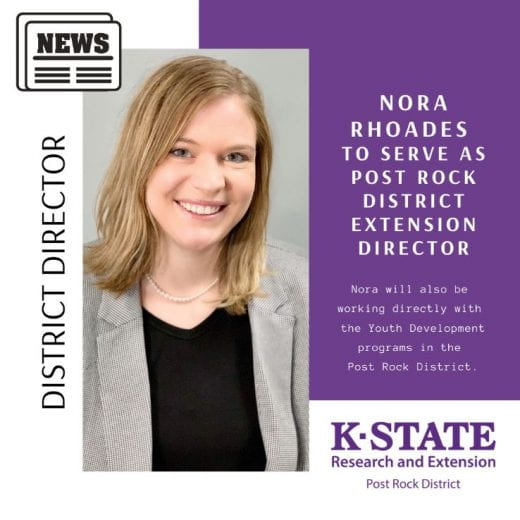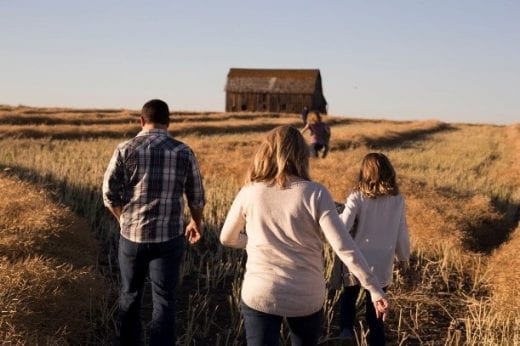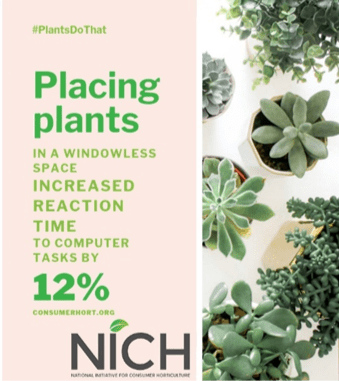 Save the date for our annual 8-week program that celebrates healthy living: Walk Kansas! Walk Kansas 2020 will run from March 15-May 9th. Gather up your team of 6 and follow us on facebook to stay updated and in the know!
Save the date for our annual 8-week program that celebrates healthy living: Walk Kansas! Walk Kansas 2020 will run from March 15-May 9th. Gather up your team of 6 and follow us on facebook to stay updated and in the know!
By: Ashley Svaty
 Save the date for our annual 8-week program that celebrates healthy living: Walk Kansas! Walk Kansas 2020 will run from March 15-May 9th. Gather up your team of 6 and follow us on facebook to stay updated and in the know!
Save the date for our annual 8-week program that celebrates healthy living: Walk Kansas! Walk Kansas 2020 will run from March 15-May 9th. Gather up your team of 6 and follow us on facebook to stay updated and in the know!
By: Ashley Svaty
 The best time to fertilize spring-flowering bulbs is when foliage emerges in the spring rather than at flowering. Traditionally, gardeners have applied fertilizer during bloom or a bit after, but because bulb roots start to die at flowering, fertilizer applied at bloom is wasted. Roots are active when the foliage first pokes through the ground.
The best time to fertilize spring-flowering bulbs is when foliage emerges in the spring rather than at flowering. Traditionally, gardeners have applied fertilizer during bloom or a bit after, but because bulb roots start to die at flowering, fertilizer applied at bloom is wasted. Roots are active when the foliage first pokes through the ground.
Nutrients applied then help the plant produce flowers the following year. If bulbs have been fertilized in the past, there are often plenty of phosphorus and potassium in the soil. It is best to use a soil test to be certain. If the soil needs phosphorus and potassium, use a complete fertilizer (such as 10-10-10, 9-9-6, etc.) at the rate of 2.5 lbs. per 100 square feet. This would equal 1 rounded teaspoon per square foot. If phosphorus and potassium are not needed, blood meal makes an excellent fertilizer. It should be applied at the rate of 2 lbs. per 100 square feet or 1 teaspoon per square foot. Lawn fertilizers such as a 27-3-3 or 30-3-3 can be used, but cut the rate by a third. Also make sure the lawn fertilizer does not contain a weed preventer or weed killer.
Remember to leave the foliage until it dies naturally. The energy in the foliage is transferred to the bulb as the foliage dies and will help bloom next year.
By: Cassie Homan
 Winter is here, but many people are planning now for gardening. While you study garden catalogs or websites, don’t forget to plan how you will preserve the produce this summer. Your edible garden can be preserved in many ways including canning, freezing, dehydrating, and pickling.
Winter is here, but many people are planning now for gardening. While you study garden catalogs or websites, don’t forget to plan how you will preserve the produce this summer. Your edible garden can be preserved in many ways including canning, freezing, dehydrating, and pickling.
What freezer space do you have? Be sure to use up last year’s stash to make room for the new batch. Clean the freezer to remove stray food and spills from broken packages. To freeze food, follow freezing guidelines for each food and use bags or plastic containers designated for freezing to maintain best food quality.
Do you like to can your produce? If so, get up to date on current recipes and guidelines. For best safety and quality, follow tested recipes. Using older recipes and methods can lead to spoiled food, food waste, and foodborne illness.
Have you checked your equipment? Now is the time to get your dial gauge tested. Contact your local Extension office for testing. The canner brands we can test include National, Presto, Maid of Honor and Magic Seal. Inspect the canner for any wear and get parts replaced. Sources for replacement parts can be found at www.rrc.k-state.edu/preservation/canning.html.
Learn more about food preservation at www.rrc.k-state.edu/preservation/index.html.
By: Ashley Svaty
 Nora Rhoades has been named the Post Rock District Director, effective December 15, 2019. She will also serve as the Youth Development Extension Agent overseeing a comprehensive positive youth development program for the District. You can reach Nora by contacting any Post Rock District Office or by emailing nrhoades@ksu.edu.
Nora Rhoades has been named the Post Rock District Director, effective December 15, 2019. She will also serve as the Youth Development Extension Agent overseeing a comprehensive positive youth development program for the District. You can reach Nora by contacting any Post Rock District Office or by emailing nrhoades@ksu.edu.
Nora has served our five counties as a Family and Youth Development Extension Agent since 2014. Prior to that appointment, she served as a Post Rock District 4-H Program Coordinator. Nora lives in northern Smith County with her husband, Wyatt, and their three sons, Ty, Rence and Eldon. Wyatt operates a hay farm and cattle operation.
Nora is thrilled to continue serving K-State Research and Extension’s Post Rock District through her administrative leadership and by extending her passion for developing tomorrow’s difference makers.
Follow Post Rock Extension on Facebook as we work to fill other professional positions in the Post Rock District.
By: Nora Rhoades
 Join us for learning the strategies for farm family success in the shark tank of “WHAT IF!” The event will feature nationally recognized speaker, Dr. Ron Hanson, University of Nebraska-Lincoln Harlan Agribusiness Professor Emeritus. The event is January 8, 2020 in Downs, KS beginning at 5:30PM. For complete details and to register visit https://www.postrock.k-state.edu/. Registration is due January 3. Contact Sandra Wick, District Crop Production Extension Agent, at 785-282-6823 or swick@ksu.edu.
Join us for learning the strategies for farm family success in the shark tank of “WHAT IF!” The event will feature nationally recognized speaker, Dr. Ron Hanson, University of Nebraska-Lincoln Harlan Agribusiness Professor Emeritus. The event is January 8, 2020 in Downs, KS beginning at 5:30PM. For complete details and to register visit https://www.postrock.k-state.edu/. Registration is due January 3. Contact Sandra Wick, District Crop Production Extension Agent, at 785-282-6823 or swick@ksu.edu.
By: Nora Rhoades
 The holidays may be over but January is a time to celebrate houseplants. Most houseplants are easy to care for and add so much life to a space. Having a plant in your office or home is a great way to bring some color indoors and cure your winter blues.
The holidays may be over but January is a time to celebrate houseplants. Most houseplants are easy to care for and add so much life to a space. Having a plant in your office or home is a great way to bring some color indoors and cure your winter blues.
By: Cassie Homan
Maintaining social activities and relationships is important to our health and wellbeing. Engaged people are often healthier, happier, less depressed, and demonstrate enhanced brain vitality. Although it may be more challenging in the winter months to stay socially active, make a point to find creative ways to stay connected with others to boost self-esteem, maintain connections, keep a positive attitude, maintain brain health, along with many more benefits!
By engaging with people and participating in activities you enjoy, social activity can be easy, fun, and fulfilling. Examples of social activities include:
 Playing cards
Playing cardsChallenge yourself to be social even when you don’t want to. Some individuals struggle with social activity because they are depressed. In a case of depression, a person may feel like being alone, but social isolation can actually feed the depression. Even though it can be a challenge, the benefits of seeking social activity, including with a close friend or even a therapist, are worth the effort and can help ease depressive symptoms. This winter go ahead and try something new to get social! Take a class, volunteer, participate in support groups, and reach out to special friends to let them know you care and are there for them.
By: Ashley Svaty